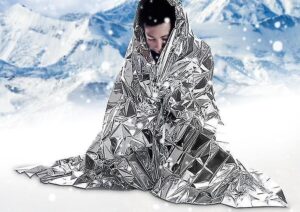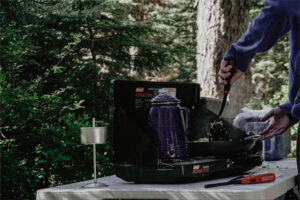 Planning a big excursion into the wilderness? Having a survival kit with you is important—it might just save your life if things go wrong. While you can buy a pre-organized survival pack, the ones you see in stores are generally inadequate when disaster strikes—a better idea: Create your own.
Planning a big excursion into the wilderness? Having a survival kit with you is important—it might just save your life if things go wrong. While you can buy a pre-organized survival pack, the ones you see in stores are generally inadequate when disaster strikes—a better idea: Create your own.
This article will cover everything that you’ll need to put together a tactical survival kit that will give you a fighting chance if you find yourself in a dangerous situation. In addition to the survival kit list, this article will discuss how to keep and transport the kit so it is ready when you need it.
Storing a Survival Kit
In addition to what you have in your kit, how you store it is essential.
On paddling expeditions when you risk losing your boat and gear in rapids, your survival kit should be waterproof, carried in a compact pack (such as a fanny pack), and strapped to your body while on the water. At night, however, it is preferable to leave your gear in the boat in case you need to flee camp quickly (for example, if a troublesome bear appears).
On the other hand, if you’re traveling or hunting upland, consider spreading your equipment out: Place stuff in multiple pockets and packs to avoid putting all of your eggs in one basket. If you lose your pack, you will not lose your full survival gear.
Tailor Your Kit to Your Environment
Potential survival challenges vary depending on the season and location. Before embarking on your excursion, create your own kit and personalize it to your exact needs.
For example, are you going somewhere where you can catch fish for food? If not, you should probably leave your fishing gear behind. If there are fish, which ones are most common? You may need to bring smaller hooks to capture them. The recommendations below will give you a basic sense of what you need, but it’s always a good idea to think about how they’ll operate in your context and make adjustments as needed. Regardless of where you’re going, the items listed below will provide you the best chance of remaining alive in many distant survival situations.
Space Blanket
A space blanket reflects your body heat, keeping you warm, plus it is lightweight and takes up little space. It may also be used to waterproof a shelter, collect rainwater, and reflect the heat from a fire.
Parachute Cord
Bring around 10 to 15 feet of 550-pound test parachute cord to help in shelter construction. Parachute cord has additional use. It has an outer sheath that covers seven interior strands, which may be taken out and used for trapping, connected together for a fishing line, or woven into a fishing net. In a pinch, parachute cord can also serve as tinder.
Food
Putting high-energy, non-perishable meals on your survival kit list is an excellent idea. You need to ensure your body obtains the required nutrients for maximum operation. This may contain ready-to-eat canned goods, energy bars, protein bars, cereal, and dried fruit.
When making your long-term survival gear list, keep portable stoves, cooking pans, fishing kits, fishing lines, and snare wire in mind. These tools can help you extend your meal selections and get the nutrition you need. You will also need a fire-starting kit.
Ferrocerium Rod
Pick a four- to six-inch ferrocerium rod for your setup. Ferrocerium is a metallic alloy containing iron and magnesium. It generates hot sparks when scratched with a piece of steel, such as your knife, and it works even when wet. Use it to light fine tinder like birch bark scrapings.
First Aid kit
Injuries can occur at any time. Prepare a first aid package since it can treat a little cut or a life-threatening illness. A well-stocked first aid kit should include basic medical items including bandages, antiseptic wipes, tweezers, medical tape, and pain relievers. You should also include any personal medications on your survival equipment list so that you are always prepared to cope with unexpected crises.
Tinder
Carrying tinder to help you start a fire can help you avoid fatal hypothermia. There are several possibilities for your survival pack. Pack Coghlan’s fire sticks, fat wood (a dried, resin-rich wood that may be cut into small, highly combustible pieces), or make your own tinder from cotton balls soaked in Vaseline (keep them in a small Ziploc bag in your box).
Clothing
Having the proper protective clothes during an emergency might be the difference between life and death. You may experience intense cold, torrential rain, or adverse weather conditions. Waterproof boots, thermal underwear, gloves, and a cap can keep you safe and comfortable in even the most extreme conditions. It is advisable to include a complete change of clothes in your survival kit list.
Navigation tools
A compass, map, and GPS are must-have items for your survival kit to help you navigate during an emergency. Digital navigation devices are convenient and quick, but they can malfunction due to signal loss or battery failure. A compass and map, on the other hand, are always there to lead you to safety, regardless of the conditions. This is why you should include both on your list of survival supplies.
Snare Wire
22- to 24-gauge brass, copper, or stainless-steel wire is ideal for snaring rabbits or partridges. Wire is also useful in shelter construction and routine maintenance. Twisting many lengths of wire together creates a stronger trap for larger game.
Flagging Tape
Place a complete roll of flagging tape in your survival kit. This tape allows you to leave a breadcrumb trail to avoid getting lost while simultaneously alerting rescuers (and passersby) to your location.
Emergency Communication
Communication is essential for survival during an emergency. Whistles, flares, and mirrors are traditional techniques of signaling for aid over large distances. Modern communication gadgets like mobile phones and satellite phones should also be included in your survival pack. Make sure they have a full battery life and include additional batteries or a battery pack in your outdoor survival gear.
Folding Saw
A small foldable saw (which you may put in your pack) will allow you to do larger cutting tasks that your belt knife cannot handle.
Final Thoughts
By the way, if you enjoyed this article then you’ll love our survival mini guide. If you need any camping equipment you can check our website https://www.deermaple.com/









